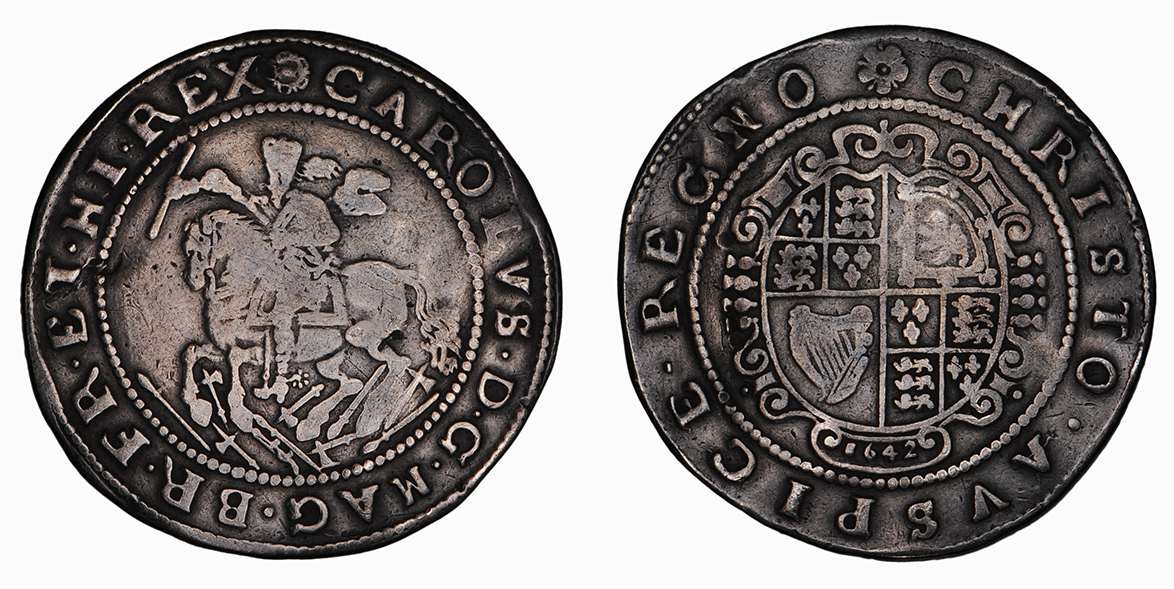
This provincial halfcrown has been debated over by numismatists for decades. The coin shows far greater signs of artistic endeavour than most coins struck during the English Civil War which begs the questions - what occasion was it designed for, where was it struck and when was it truly made?
The coin resembles the Scottish Rebellion Medal of 1639 by Thomas Simon. As the workmanship is worthy of a commemorative piece the date 1642 may relate to the raising of the kings standard at Nottingham on 22nd August 1642 at the beginning of the Civil War. The previous raising of the standard was in 1639 when the rebellion medal was struck.
Truro and Exeter have been attributed as mints to the coin due to the rose mint mark. Exeter was only taken by the Royalists in late 1643 so the date of the coin doesn’t appear to relate. Truro did strike halfcrowns featuring a galloping horse but these obverse dies are dated as late strikings that suggest the coins date is not correct. The dies from Truro were transported to Exeter after the capture of the city where the coin was most likely struck in 1644.
The ‘1642’ date suggests the striking had a retrospective theme whilst the significance of the Exeter mint location is hard to determine. The most noteworthy event for Exeter in 1644 was a personal visit by King Charles followed by a Royalist victory over the Earl of Essex at Lostwithiel.
Whilst it is difficult to pin certain facts and figures to the halfcrown it remains one of the most interesting and important issues of the English Civil War.







